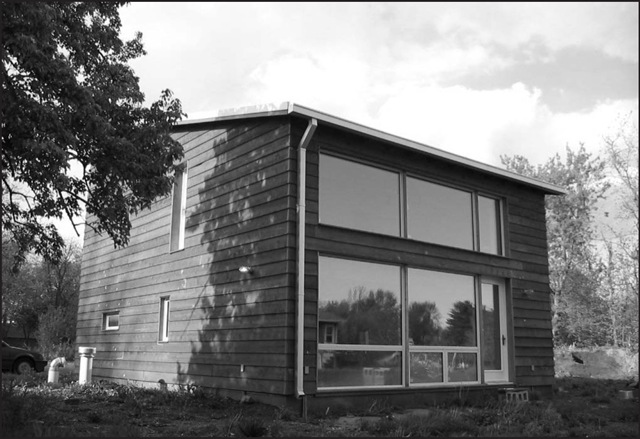A Paper with the above title was written on a study that was carried out, which looked at comparing the performance of a Passive building and a Low-energy building. The study outlined a Low-Energy house as on that has an annual heating demand equal or less than 17kWh/m^2a. For the purpose of the study, two units from each building were selected, one smaller unit and one larger unit for each standard. The smaller units and bigger units of each standard are of similar size, and housed a similar number of people. Again, for the purpose of the study, the smaller Low-Energy unit was called LH_1, the smaller Passive unit was called PH_1, and similarly the larger units were called LH_2 and PH_2 respectively.
All of the units were built with 18cm ferrocement, however the Passive units have 30cm of EPS F-15 insulation, with the Low-Energy units having 11cm standard insulation. The Passive units have higher quality windows with a U-value of 0.8 W/m^2K, while the Low-Energy units have windows with a U-value of 1.34 W/m^2K. The passive building has a central ventilation device in a mechanical equipment room which is situated in the basement, which also has a filter, ventilators for delivery and return air and an efficient heat recovery system. Individual inhabitants can control the air change rate and temperature in their units. The temperature is regulated by a thermostat, which increases the temperature of the supply air, while the air change rate can be set to four settings, between .1/hr and .6/hr, depending on the number of people in the house. On the other hand, the Low-Energy building has a basic ventilation system which provides constant, a minimal air change rate. This means the main method of ventilation for the Low-Energy units is by the manual opening of windows and the use of gaps under the doors to allow air flow.
 |
| Ferrocement Construction (source) |
The parameters which were measured and compared in the study were indoor air temperature, relative humidity and CO2 concentrations. The parameters were measured continuously every 5-15mins via sensors in each apartment situated in the living room (LR) and sleeping rooms (SR) for the five month period between Feb and June 2009. Besides these performance based parameters, additional data was also compared, mainly the metered energy usage of the units, the construction costs, the embodied energy assumptions and the CO2 emission assumptions pertaining to the energy mix used.
The conclusions reached by the paper are, in brief, that the Passive units performed slightly better in terms of Indoor Air Temperature, Relative Humidity and CO2 Concentrations. This is most likely down to the ventilation system, which helped contribute to lower levels of CO2 concentrations, in particular during cold periods and in the multiple occupancy apartments. The Passive apartments were also shown to consume around 65% less heating energy and 35% less electrical energy compared to low-energy apartments. The CO2 emissions were approximately 25-40% less than low-energy houses. As regards the initial costs penalty associated with the construction of passive apartments, compared with the Low-Energy ones, the passive apartments were found to be roughly 5% higher, which could be attributed to the ventilation system, higher quality windows and additional insulation. This resulted in an estimated payback period of between 8-18 years, which this study deems subject to change under two uncertainties, 1) given a different source of energy than the one relevant in the present case (district network heating), 2) in the case of a drastic increase in the price of energy in the future. Either of these occurrences could lead to the payback time being greatly reduced. To summarize the results, the study suggests that passive buildings, compared to low-energy buildings, use significantly less heating energy and offer slightly better indoor conditions, thereby, the required additional expenditure of resources (as represented by embodied energy) and environmental impact (as represented by CO2 emissions) are offset in a rather short period. Moreover, the required additional construction cost does not appear to be either excessive or prohibitive. It should also be mentioned that all of the inhabitants were interviewed after they had moved in and they were all reasonably pleased with the thermal performance and air quality.
I feel that a number of valid points can be taken from this study, mainly that the cost difference in building a Passive standard house and a Low-Energy house isn't astronomical, and while the differences in performances aren't either, with the current global trends of increasing energy cost, the estimated payback period for a Passive house will only decrease, making a Passive house increasingly a better option.

